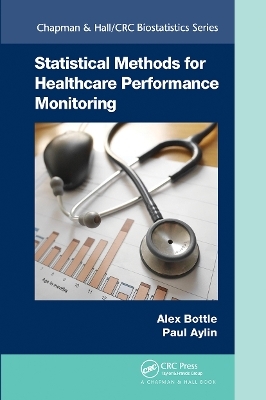
Statistical Methods for Healthcare Performance Monitoring
CRC Press (Verlag)
978-1-032-24283-5 (ISBN)
Statistical Methods for Healthcare Performance Monitoring covers measuring quality, types of data, risk adjustment, defining good and bad performance, statistical monitoring, presenting the results to different audiences and evaluating the monitoring system itself. Using examples from around the world, it brings all the issues and perspectives together in a largely non-technical way for clinicians, managers and methodologists.
Statistical Methods for Healthcare Performance Monitoring is aimed at statisticians and researchers who need to know how to measure and compare performance, health service regulators, health service managers with responsibilities for monitoring performance, and quality improvement scientists, including those involved in clinical audits.
Dr. Alex Bottle is a Senior Lecturer at Imperial College London, UK Dr. Paul Aylin is a Professor at Imperial College London, UK
Introduction
The need for performance monitoring
Measuring and monitoring quality
The need for this book
Who is this book for and how should it be used?
Common abbreviations used in the book
Acknowledgments
Origins and examples of monitoring systemsOrigins
Healthcare scandals
Examples of monitoring schemes
Goals of monitoring
Choosing the unit of analysis and reportingIssues principally concerning the analysis
Issues more relevant to reporting: attributing performance to a given unit in a system
What to measure: choosing and defining indicatorsHow can we define quality?
Common indicator taxonomies
The particular challenges of measuring patient safety
The particular challenges of multimorbidity
Measuring the health of the population and quality of the whole healthcare system
Efficiency and value
Features of an ideal indicator
Steps in construction and common issues in definition
Validation of indicators
Some strategies for choosing among candidates
Time to go: when to withdraw indicators
Conclusion
Sources of dataHow to assess data quality
Administrative data
Clinical registry data
The accuracy of administrative and clinical databases compared
Indicent reports and other ways to capture safety events
Surverys
Other sources
Other issues concering data sources
Conclusion
Risk-adjustment principles and methodsRisk adjustment and risk prediction
When and why should we adjust for risk?
Alteratives to risk adjustment
What factors should be adjust for?
Selecting an initial set of candidate variables
Dealing with missing and extreme values
Timing of the risk factor measurement
Building the model
Output the observed and model-predicted outcomesRatios versus differences
Deriving SMRs from standardisation and logistic regression
Other fixed effects approaches to generate an SMR
Random effects based SMRs
Marginal versus multilevel models
Which is the "best" modelling approach overall?
Further reading on producing risk-adjusted outcomes by unit
Composite measuresSome examples
Steps in the construction
Some real examples
Pros and cons of composites
Setting performance thresholds and defining outliersDefining acceptable performance
Bayesian methods for comparing providers
Statistical process control and funnel plots
Multiple testing
Ways of assessing variation between units
How much variation is "acceptable"?
The impact on outlier status of using fixed versus random effects to derive SMRs
How reliably can we detect poor performance?
Some resources for quality improvement methods
Making comparisons across national bordersExamples of multinational patient-level databases
Challenges
Interpreting apparent differences in performance between countries
Conclusion
Presenting the results to stakeholdersMain ways of presenting comparative performance data
Effect on behaviour of the choice of format when providing performance data
Importance of the method of presentation
Examples of giving performance information to units
Examples of giving performance information to the public
Metadata
Evaluating the monitoring systemStudy design and statistical approaches to evalutating a monitoring system
Economic evaluation methods
Concluding thoughtsSimple versus complex
Specific versus general
The future
References
Appendix: glossary of main statistical terms used
| Erscheinungsdatum | 14.12.2021 |
|---|---|
| Reihe/Serie | Chapman & Hall/CRC Biostatistics Series |
| Zusatzinfo | 12 Illustrations, black and white |
| Verlagsort | London |
| Sprache | englisch |
| Maße | 156 x 234 mm |
| Gewicht | 417 g |
| Themenwelt | Medizin / Pharmazie ► Gesundheitswesen |
| Studium ► Querschnittsbereiche ► Epidemiologie / Med. Biometrie | |
| Wirtschaft ► Betriebswirtschaft / Management ► Planung / Organisation | |
| Wirtschaft ► Volkswirtschaftslehre | |
| ISBN-10 | 1-032-24283-3 / 1032242833 |
| ISBN-13 | 978-1-032-24283-5 / 9781032242835 |
| Zustand | Neuware |
| Haben Sie eine Frage zum Produkt? |
aus dem Bereich


